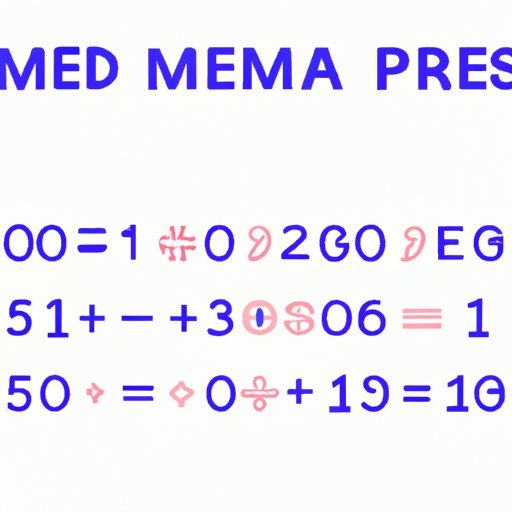Introduction
Understanding how to use the order of operations, or PEMDAS, is an essential part of solving math problems. PEMDAS stands for Parentheses, Exponents, Multiplication and Division, Addition and Subtraction, and is used to determine the order in which calculations should be made when solving a math problem. In this article, we will explore the basics of PEMDAS, understand how to solve math problems using PEMDAS, master the order of operations with PEMDAS, and demystify PEMDAS by looking at its rules and applications.

Understanding How to Solve Math Problems Using PEMDAS
The first step in understanding how to use PEMDAS is to understand the order in which calculations should be made. The order is as follows: Parentheses, Exponents, Multiplication and Division (from left to right), and Addition and Subtraction (from left to right). It is important to note that all calculations within parentheses should be done before any other calculations.
Now let’s work through a sample problem using PEMDAS. We will use the following equation: 2 + (3 * 4) + 5. First, we need to calculate what is inside the parentheses, so 3 * 4 = 12. Then, we add 2 + 12 = 14. Finally, we add 14 + 5 = 19. Therefore, the answer to the equation is 19.

Mastering the Order of Operations with PEMDAS
Once you have a basic understanding of how to use PEMDAS, it is important to remember the order of operations. To do this, it can help to memorize the acronym PEMDAS. You can also break down the order into smaller chunks, such as “Parentheses, Exponents, Multiplication/Division, Addition/Subtraction”. Another helpful tip is to focus on the types of operations that are done first and last – parentheses always come first and addition/subtraction always come last.
In addition to memorizing the order of operations, there are some other tips and tricks for remembering PEMDAS. For example, you can use mnemonic devices such as “Please Excuse My Dear Aunt Sally” or “Parentheses Exponents Multiplication Division Addition Subtraction”. You can also try writing out the order of operations on a piece of paper or making flashcards to help you remember.
Demystifying PEMDAS: An Overview of its Rules and Applications
Now that we have explored the basics of PEMDAS, let’s look at the different types of problems that require the use of PEMDAS. These include equations with multiple operations, equations with exponents, fractions, and percentages. It is important to note that when dealing with fractions and percentages, the order of operations is slightly different. For fractions, the calculation must be done from left to right; for percentages, the calculation must be done from right to left.
It is also important to be aware of common mistakes made in calculating with PEMDAS. One common mistake is forgetting to calculate the items within parentheses first. Another common mistake is forgetting to follow the order of operations and instead doing the calculations in the wrong order. Finally, it is important to be aware of the differences between multiplication and division and addition and subtraction when working with equations that contain both types of operations.
Conclusion
In conclusion, understanding and mastering the order of operations (PEMDAS) is an essential part of solving math problems. By understanding the basics of PEMDAS, understanding how to solve math problems using PEMDAS, mastering the order of operations with PEMDAS, and demystifying PEMDAS by looking at its rules and applications, you can become more confident in your ability to solve math problems. Remember to always calculate the items within parentheses first, follow the order of operations, and be aware of the differences between multiplication and division and addition and subtraction.
(Note: Is this article not meeting your expectations? Do you have knowledge or insights to share? Unlock new opportunities and expand your reach by joining our authors team. Click Registration to join us and share your expertise with our readers.)
